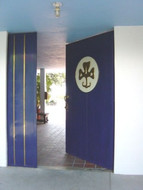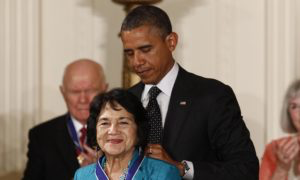Episode 25 - Our Cabaña
- Marissa Harley

- Aug 20, 2020
- 4 min read
Updated: Sep 23, 2020
This week on Guides’ Own we are hopping back on a plane heading down south to Our Cabaña! Stop number three of our World Centre tour brings us to the wonderful world of Mexico where Taryn shares some of the highlights from her trip and the friends she made.
Ideas for a World Centre in the Western Hemisphere were conceived in 1946 during a training session in Cuba. Six years later, the Eastern Hemisphere Committee and World Committee gave their approval and the formal planning started. Many locations were considered, including Panama, Cuba, and Arizona, Ultimately, Cuernavaca was chosen because it had many local arts and crafts, many interesting historical and archeological places to visit, and the land was being sold for a good price.
Five acres of land were purchased at $25,000 with the help of Girl Scouts of the USA through their Juliette Low World Friendship Fund. The remaining funds needed to construct the centre's buildings were raised by Clementine Tangeman, who solicited donations from corporations and benefactors as well as encouraging Girl Guides and Scouts worldwide to collect and donate the remaining money. Once the money was raised, they asked architect Alfredo Terrazas to design the buildings. Coincidentally, his mom was the chief executive of the Western Hemisphere, so they were able to easily convince him to take on the project.
On February 22, 1956 a dedication ceremony for Our Cabaña was held despite it still being under construction. This date was chosen because it was Thinking Day and Lady Baden-Powell was in Mexico at the time. The very same day, Lady BP donated the iconic blue door (The Chief’s Door) that greets every Girl Guide and Girl Scout to Our Cabaña and welcomes them to the start of a wonderful adventure.
Our Cabaña was officially open in July of 1957 and was inaugurated with its first session and participants being the “Juliette Low” seminar
During this event, the Our Cabaña song was written, using the melody of a Mexican traditional birthday song: Las Mañanitas. Since then, Our Cabaña has received over 70,000 Girl Guides and Girl Scouts from all over the world!
In SWAGGYK, we talk about Dolores Huerta, a civil rights activist and organizer for farmworkers in the southern US. She fought hard to make sure that everyone has what they need.
Dolores was born on April 10, 1930 in Dawson, New Mexico (a small mining town in the mountains of northern NM). Her Father, Juan Ferånández, was a farm worker and miner by trade. He later became a union activist and a New Mexico state legislator and ran for political office, winning a seat in the New Mexico legislature in 1938. Her mother, Alicia Chavez, held many jobs and became an entrepreneur. She worked two jobs to provide for the family, as a waitress and cannery worker, until she could buy a small hotel and restaurant. Both her father's political and labor activism and her mother’s community activism and compassionate treatment of workers greatly influenced Dolores and provided her with inspiration when it came to her career.
Growing up, Dolores was a good student and won second place in a national Girl Scout essay contest. Despite her achievements, she still experienced the racism that many Mexicans and Mexican Americans suffered from, especially those who were farm workers. She was a Girl Scout from age 8 to 18, a member of Troop 8 in Stockton, CA. Dolores’ troop was quite unique for its time in that it was truly representative of the international community of Stockton. It was made up of girls from diverse ethnic backgrounds, including African-American, Chinese, Filipino, Latino, and Anglo at a time when racism was prevalent.
After earning earning her A.A. degree from Stockton College, Dolores held a series of unsatisfying jobs. This lead to her getting her teaching credentials. However, her teaching career lasted only a few months because Dolores was so distraught over the poor living conditions of her students that she resigned. She decided that she could do more for the hungry and barefoot farmworkers’ children in her class by helping their parents win more equitable working conditions.
Dolores started the Stockton chapter of the Community Services Organization (CSO) in 1955 and the Agricultural Workers Association (AWA) in 1960. During this time, she met Cesar Chavez, a fellow CSO official who shared her interest in activism. When their efforts to have the CSO expand its efforts to help farm workers failed in 1962, they both left the organization and, with Gilbert Padilla, co-founded the National Farm Workers Association (NFWA). In 1965, the AWA and the NFWA combined to become the United Farm Workers Organizing Committee (later, simply the United Farm Workers). Dolores continued to work hard for labouring farmers, organizing strikes and boycotts that resulted in many positive changes for farmers, including the passage of the 1975 Agricultural Labor Relations Act.
Read about how Dolores is still working as a fierce advocate for farm workers, immigration and women through the Dolores Huerta Foundation, as well as the Dolores Huerta Girl Scout patch.
And in our campfire, we talk about the Our Cabaña song. It's a song that highlights the importance of international friendship!
The song was written in 1957 during the 1st event held at Our Cabaña (a Juliette Low Seminar) by participants. It shares a tune with the traditional Mexican Birthday song, Las Mananitas .
You can listen to Episode 25 now, and catch up on previous episodes, either right here on our website or on your favourite podcast app (Spotify, Apple, Google, Anchor, etc.).
We would love to know what your opening and closings you use in your units. Leave a comment below, or send us a message on Facebook, Twitter and Instagram. If you'd like to contribute to an episode of Guides' Own, send us your ideas for topics, program, campfire songs, etc. send a message to guidesown@gmail.com.
Share your Our Cabaña stories with us!
Marissa & Taryn





















Comments